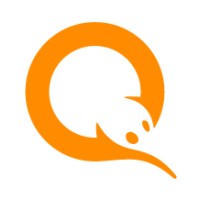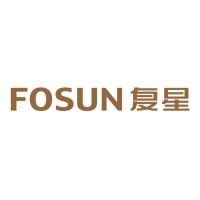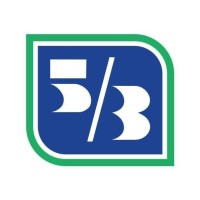
Qiwi Company Cyber Security Posture
qiwi.comО QIWI QIWI – ведущий провайдер платёжных и финансовых сервисов нового поколения в России и странах СНГ, которому принадлежит интегрированная платежная сеть, позволяющая производить платежи по мобильным, онлайн- и офлайн-каналам. Наша сеть включает свыше 21,5 млн виртуальных кошельков и более чем 141 000 терминалов и точек приема платежей. Сервисы QIWI позволяют торговым компаниям и клиентам принимать платежи и совершать переводы наличными или в электронной форме на сумму свыше 101 млрд руб., объединяя более чем 45 млн клиентов, которые пользуются услугами сети не реже одного раза в месяц. Клиенты QIWI могут использовать наличные, предоплаченные карты и другие способы безналичных расчетов для оплаты товаров и услуг или осуществления денежных переводов, пользуясь онлайн- и офлайн платежными инструментами. About QIWI plc. QIWI is a leading provider of next generation payment and financial services in Russia and the CIS. It has an integrated proprietary network that enables payment services across online, mobile and physical channels. It has deployed over 21.5 million virtual wallets, over 141,000 kiosks and terminals, and enabled merchants and customers to accept and transfer over RUB 101 billion cash and electronic payments monthly connecting over 45 million consumers using its network at least once a month. QIWI’s consumers can use cash, stored value and other electronic payment methods in order to pay for goods and services or transfer money across virtual or physical environments interchangeably.
Qiwi Company Details
qiwi
827 employees
6042.0
52
Financial Services
qiwi.com
Scan still pending
QIW_2173230
In-progress
Between 800 and 900
This score is AI-generated and less favored by cyber insurers, who prefer the TPRM score.
 Qiwi Global Score
Qiwi Global Score.png)

Qiwi Company Scoring based on AI Models
| Model Name | Date | Description | Current Score Difference | Score |
|---|---|---|---|---|
| AVERAGE-Industry | 03-12-2025 | This score represents the average cybersecurity rating of companies already scanned within the same industry. It provides a benchmark to compare an individual company's security posture against its industry peers. | N/A | Between 800 and 900 |
Qiwi Company Cyber Security News & History
| Entity | Type | Severity | Impact | Seen | Url ID | Details | View |
|---|---|---|---|---|---|---|---|
| Qiwi | Cyber Attack | 100 | 5 | 05/2022 | QIW13831522 | Link | |
Rankiteo Explanation : Attack threatening the organization's existenceDescription: QIWI is a Russian payments company targeted by the NB65 hacking group amid the Ukraine-Russia war. NB65 encrypted its SQL databases and Tele2Pay boxes and shut down their Hyper-V clusters and stole the credit card details of millions of QIWI’s clients. Apparently, the exfiltrated data contained 12.5 million records and about 30 million payment records from its database. | |||||||
Qiwi Company Subsidiaries

О QIWI QIWI – ведущий провайдер платёжных и финансовых сервисов нового поколения в России и странах СНГ, которому принадлежит интегрированная платежная сеть, позволяющая производить платежи по мобильным, онлайн- и офлайн-каналам. Наша сеть включает свыше 21,5 млн виртуальных кошельков и более чем 141 000 терминалов и точек приема платежей. Сервисы QIWI позволяют торговым компаниям и клиентам принимать платежи и совершать переводы наличными или в электронной форме на сумму свыше 101 млрд руб., объединяя более чем 45 млн клиентов, которые пользуются услугами сети не реже одного раза в месяц. Клиенты QIWI могут использовать наличные, предоплаченные карты и другие способы безналичных расчетов для оплаты товаров и услуг или осуществления денежных переводов, пользуясь онлайн- и офлайн платежными инструментами. About QIWI plc. QIWI is a leading provider of next generation payment and financial services in Russia and the CIS. It has an integrated proprietary network that enables payment services across online, mobile and physical channels. It has deployed over 21.5 million virtual wallets, over 141,000 kiosks and terminals, and enabled merchants and customers to accept and transfer over RUB 101 billion cash and electronic payments monthly connecting over 45 million consumers using its network at least once a month. QIWI’s consumers can use cash, stored value and other electronic payment methods in order to pay for goods and services or transfer money across virtual or physical environments interchangeably.
Access Data Using Our API

Get company history
.png)
Qiwi Cyber Security News
Russia’s CBR shuts down major e-payment player Qiwi
The CBR noted that Qiwi has violated federal laws, as well as regulations of the CBR itself. "The bank systematically violated legal ...
Ukrainian Police Shutter Allegedly Illegal Crypto Exchanges
The exchanges are suspected of helping to facilitate money laundering services for various individuals. Security Service officials say that ...
Ukraine shuts down money laundering cryptocurrency exchanges
Sergiu Gatlan ... The Security Service of Ukraine (SBU) took down a network of cryptocurrency exchanges used to anonymize transactions since the ...
New DDoS-as-a-Service platform used in recent attacks on hospitals
DDoSaaS platforms rent their available firepower to those looking to launch disruptive attacks on their targets, absolving them from the need to ...
Anonymous hacked the Russian payment system QIWI
Anonymous hackers use the hashtags #Oprussia or #OpKremlin to announce actions against the Russian segment of the Internet. The team claims to ...

Qiwi Similar Companies

Fosun 复星
Fosun was founded in 1992. After more than 30 years of development, Fosun has become a global innovation-driven consumer group. Adhering to the mission of creating happier lives for families worldwide, Fosun is committed to creating a global happiness ecosystem fulfilling the needs of one billion f

Ally
Ally Financial Inc. (NYSE: ALLY) is a leading digital financial services company and a top 25 U.S. financial holding company offering financial products for consumers, businesses, automotive dealers and corporate clients. NMLS #3015 | #181005 | https://www.nmlsconsumeraccess.org/ Ally's legacy da

Paytm
Paytm started the Digital Revolution in India. And we went on to become India’s leading Payments App. Today, more than 20 Million merchants & businesses are powered by Paytm to Accept Payments digitally. This is because more than 300 million Indians use Paytm to Pay at their stores. And that’s

BBVA en México
Bienvenido a la página oficial del Banco BBVA Bancomer. Institución financiera de México desde 1932. Es una empresa filial de Banco Bilbao Vizcaya Argentaria (BBVA), uno de los grupos financieros líderes en Europa y considerado entre uno de los más grandes de la Zona Euro. El Grupo trabaja por un f

Fifth Third Bank
At Fifth Third Bank, everything we do is rooted in our purpose: to improve the lives of our customers and the well-being of our communities. Since our founding in 1858, we’ve been committed to creating a better financial experience by empowering our customers and clients to achieve what matters most

Lincoln Financial
Lincoln Financial (NYSE: LNC) helps people to confidently plan for their version of a successful future. We focus on identifying a clear path to financial security, with products including annuities, life insurance, group protection, and retirement plan services. With our 120-year track record of

Frequently Asked Questions (FAQ) on Cybersecurity Incidents
Qiwi CyberSecurity History Information
Total Incidents: According to Rankiteo, Qiwi has faced 1 incidents in the past.
Incident Types: The types of cybersecurity incidents that have occurred include ['Cyber Attack'].
Total Financial Loss: The total financial loss from these incidents is estimated to be {total_financial_loss}.
Cybersecurity Posture: The company's overall cybersecurity posture is described as О QIWI QIWI – ведущий провайдер платёжных и финансовых сервисов нового поколения в России и странах СНГ, которому принадлежит интегрированная платежная сеть, позволяющая производить платежи по мобильным, онлайн- и офлайн-каналам. Наша сеть включает свыше 21,5 млн виртуальных кошельков и более чем 141 000 терминалов и точек приема платежей. Сервисы QIWI позволяют торговым компаниям и клиентам принимать платежи и совершать переводы наличными или в электронной форме на сумму свыше 101 млрд руб., объединяя более чем 45 млн клиентов, которые пользуются услугами сети не реже одного раза в месяц. Клиенты QIWI могут использовать наличные, предоплаченные карты и другие способы безналичных расчетов для оплаты товаров и услуг или осуществления денежных переводов, пользуясь онлайн- и офлайн платежными инструментами. About QIWI plc. QIWI is a leading provider of next generation payment and financial services in Russia and the CIS. It has an integrated proprietary network that enables payment services across online, mobile and physical channels. It has deployed over 21.5 million virtual wallets, over 141,000 kiosks and terminals, and enabled merchants and customers to accept and transfer over RUB 101 billion cash and electronic payments monthly connecting over 45 million consumers using its network at least once a month. QIWI’s consumers can use cash, stored value and other electronic payment methods in order to pay for goods and services or transfer money across virtual or physical environments interchangeably..
Detection and Response: The company detects and responds to cybersecurity incidents through {description_of_detection_and_response_process}.
Incident Details
Incident 1: Ransomware Attack
Title: {Incident_Title}
Description: {Brief_description_of_the_incident}
Date Detected: {Detection_Date}
Date Publicly Disclosed: {Disclosure_Date}
Date Resolved: {Resolution_Date}
Type: {Type_of_Attack}
Attack Vector: {Attack_Vector}
Vulnerability Exploited: {Vulnerability}
Threat Actor: {Threat_Actor}
Motivation: {Motivation}
Incident 2: Data Breach
Title: {Incident_Title}
Description: {Brief_description_of_the_incident}
Date Detected: {Detection_Date}
Date Publicly Disclosed: {Disclosure_Date}
Date Resolved: {Resolution_Date}
Type: {Type_of_Attack}
Attack Vector: {Attack_Vector}
Vulnerability Exploited: {Vulnerability}
Threat Actor: {Threat_Actor}
Motivation: {Motivation}
Common Attack Types: As of now, the company has not encountered any reported incidents involving common cyberattacks.
Identification of Attack Vectors: The company identifies the attack vectors used in incidents through {description_of_identification_process}.
Impact of the Incidents
Incident 1: Ransomware Attack
Financial Loss: {Financial_Loss}
Data Compromised: {Data_Compromised}
Systems Affected: {Systems_Affected}
Downtime: {Downtime}
Operational Impact: {Operational_Impact}
Conversion Rate Impact: {Conversion_Rate_Impact}
Revenue Loss: {Revenue_Loss}
Customer Complaints: {Customer_Complaints}
Brand Reputation Impact: {Brand_Reputation_Impact}
Legal Liabilities: {Legal_Liabilities}
Identity Theft Risk: {Identity_Theft_Risk}
Payment Information Risk: {Payment_Information_Risk}
Incident 2: Data Breach
Financial Loss: {Financial_Loss}
Data Compromised: {Data_Compromised}
Systems Affected: {Systems_Affected}
Downtime: {Downtime}
Operational Impact: {Operational_Impact}
Conversion Rate Impact: {Conversion_Rate_Impact}
Revenue Loss: {Revenue_Loss}
Customer Complaints: {Customer_Complaints}
Brand Reputation Impact: {Brand_Reputation_Impact}
Legal Liabilities: {Legal_Liabilities}
Identity Theft Risk: {Identity_Theft_Risk}
Payment Information Risk: {Payment_Information_Risk}
Average Financial Loss: The average financial loss per incident is {average_financial_loss}.
Commonly Compromised Data Types: The types of data most commonly compromised in incidents are {list_of_commonly_compromised_data_types}.
Incident 1: Ransomware Attack
Entity Name: {Entity_Name}
Entity Type: {Entity_Type}
Industry: {Industry}
Location: {Location}
Size: {Size}
Customers Affected: {Customers_Affected}
Incident 2: Data Breach
Entity Name: {Entity_Name}
Entity Type: {Entity_Type}
Industry: {Industry}
Location: {Location}
Size: {Size}
Customers Affected: {Customers_Affected}
Response to the Incidents
Incident 1: Ransomware Attack
Incident Response Plan Activated: {Yes/No}
Third Party Assistance: {Yes/No}
Law Enforcement Notified: {Yes/No}
Containment Measures: {Containment_Measures}
Remediation Measures: {Remediation_Measures}
Recovery Measures: {Recovery_Measures}
Communication Strategy: {Communication_Strategy}
Adaptive Behavioral WAF: {Adaptive_Behavioral_WAF}
On-Demand Scrubbing Services: {On_Demand_Scrubbing_Services}
Network Segmentation: {Network_Segmentation}
Enhanced Monitoring: {Enhanced_Monitoring}
Incident 2: Data Breach
Incident Response Plan Activated: {Yes/No}
Third Party Assistance: {Yes/No}
Law Enforcement Notified: {Yes/No}
Containment Measures: {Containment_Measures}
Remediation Measures: {Remediation_Measures}
Recovery Measures: {Recovery_Measures}
Communication Strategy: {Communication_Strategy}
Adaptive Behavioral WAF: {Adaptive_Behavioral_WAF}
On-Demand Scrubbing Services: {On_Demand_Scrubbing_Services}
Network Segmentation: {Network_Segmentation}
Enhanced Monitoring: {Enhanced_Monitoring}
Incident Response Plan: The company's incident response plan is described as {description_of_incident_response_plan}.
Third-Party Assistance: The company involves third-party assistance in incident response through {description_of_third_party_involvement}.
Data Breach Information
Incident 2: Data Breach
Type of Data Compromised: {Type_of_Data}
Number of Records Exposed: {Number_of_Records}
Sensitivity of Data: {Sensitivity_of_Data}
Data Exfiltration: {Yes/No}
Data Encryption: {Yes/No}
File Types Exposed: {File_Types}
Personally Identifiable Information: {Yes/No}
Prevention of Data Exfiltration: The company takes the following measures to prevent data exfiltration: {description_of_prevention_measures}.
Handling of PII Incidents: The company handles incidents involving personally identifiable information (PII) through {description_of_handling_process}.
Ransomware Information
Incident 1: Ransomware Attack
Ransom Demanded: {Ransom_Amount}
Ransom Paid: {Ransom_Paid}
Ransomware Strain: {Ransomware_Strain}
Data Encryption: {Yes/No}
Data Exfiltration: {Yes/No}
Ransom Payment Policy: The company's policy on paying ransoms in ransomware incidents is described as {description_of_ransom_payment_policy}.
Data Recovery from Ransomware: The company recovers data encrypted by ransomware through {description_of_data_recovery_process}.
Regulatory Compliance
Incident 1: Ransomware Attack
Regulations Violated: {Regulations_Violated}
Fines Imposed: {Fines_Imposed}
Legal Actions: {Legal_Actions}
Regulatory Notifications: {Regulatory_Notifications}
Incident 2: Data Breach
Regulations Violated: {Regulations_Violated}
Fines Imposed: {Fines_Imposed}
Legal Actions: {Legal_Actions}
Regulatory Notifications: {Regulatory_Notifications}
Regulatory Frameworks: The company complies with the following regulatory frameworks regarding cybersecurity: {list_of_regulatory_frameworks}.
Ensuring Regulatory Compliance: The company ensures compliance with regulatory requirements through {description_of_compliance_measures}.
Lessons Learned and Recommendations
Incident 1: Ransomware Attack
Lessons Learned: {Lessons_Learned}
Incident 2: Data Breach
Lessons Learned: {Lessons_Learned}
Incident 1: Ransomware Attack
Recommendations: {Recommendations}
Incident 2: Data Breach
Recommendations: {Recommendations}
Key Lessons Learned: The key lessons learned from past incidents are {list_of_key_lessons_learned}.
Implemented Recommendations: The company has implemented the following recommendations to improve cybersecurity: {list_of_implemented_recommendations}.
References
Additional Resources: Stakeholders can find additional resources on cybersecurity best practices at {list_of_additional_resources}.
Investigation Status
Incident 1: Ransomware Attack
Investigation Status: {Investigation_Status}
Incident 2: Data Breach
Investigation Status: {Investigation_Status}
Communication of Investigation Status: The company communicates the status of incident investigations to stakeholders through {description_of_communication_process}.
Stakeholder and Customer Advisories
Incident 1: Ransomware Attack
Stakeholder Advisories: {Stakeholder_Advisories}
Customer Advisories: {Customer_Advisories}
Incident 2: Data Breach
Stakeholder Advisories: {Stakeholder_Advisories}
Customer Advisories: {Customer_Advisories}
Advisories Provided: The company provides the following advisories to stakeholders and customers following an incident: {description_of_advisories_provided}.
Initial Access Broker
Incident 1: Ransomware Attack
Entry Point: {Entry_Point}
Reconnaissance Period: {Reconnaissance_Period}
Backdoors Established: {Backdoors_Established}
High Value Targets: {High_Value_Targets}
Data Sold on Dark Web: {Yes/No}
Incident 2: Data Breach
Entry Point: {Entry_Point}
Reconnaissance Period: {Reconnaissance_Period}
Backdoors Established: {Backdoors_Established}
High Value Targets: {High_Value_Targets}
Data Sold on Dark Web: {Yes/No}
Monitoring and Mitigation of Initial Access Brokers: The company monitors and mitigates the activities of initial access brokers through {description_of_monitoring_and_mitigation_measures}.
Post-Incident Analysis
Incident 1: Ransomware Attack
Root Causes: {Root_Causes}
Corrective Actions: {Corrective_Actions}
Incident 2: Data Breach
Root Causes: {Root_Causes}
Corrective Actions: {Corrective_Actions}
Post-Incident Analysis Process: The company's process for conducting post-incident analysis is described as {description_of_post_incident_analysis_process}.
Corrective Actions Taken: The company has taken the following corrective actions based on post-incident analysis: {list_of_corrective_actions_taken}.
Additional Questions
General Information
Ransom Payment History: The company has {paid/not_paid} ransoms in the past.
Last Ransom Demanded: The amount of the last ransom demanded was {last_ransom_amount}.
Last Attacking Group: The attacking group in the last incident was {last_attacking_group}.
Incident Details
Most Recent Incident Detected: The most recent incident detected was on {most_recent_incident_detected_date}.
Most Recent Incident Publicly Disclosed: The most recent incident publicly disclosed was on {most_recent_incident_publicly_disclosed_date}.
Most Recent Incident Resolved: The most recent incident resolved was on {most_recent_incident_resolved_date}.
Impact of the Incidents
Highest Financial Loss: The highest financial loss from an incident was {highest_financial_loss}.
Most Significant Data Compromised: The most significant data compromised in an incident was {most_significant_data_compromised}.
Most Significant System Affected: The most significant system affected in an incident was {most_significant_system_affected}.
Response to the Incidents
Third-Party Assistance in Most Recent Incident: The third-party assistance involved in the most recent incident was {third_party_assistance_in_most_recent_incident}.
Containment Measures in Most Recent Incident: The containment measures taken in the most recent incident were {containment_measures_in_most_recent_incident}.
Data Breach Information
Most Sensitive Data Compromised: The most sensitive data compromised in a breach was {most_sensitive_data_compromised}.
Number of Records Exposed: The number of records exposed in the most significant breach was {number_of_records_exposed}.
Ransomware Information
Highest Ransom Demanded: The highest ransom demanded in a ransomware incident was {highest_ransom_demanded}.
Highest Ransom Paid: The highest ransom paid in a ransomware incident was {highest_ransom_paid}.
Regulatory Compliance
Highest Fine Imposed: The highest fine imposed for a regulatory violation was {highest_fine_imposed}.
Most Significant Legal Action: The most significant legal action taken for a regulatory violation was {most_significant_legal_action}.
Lessons Learned and Recommendations
Most Significant Lesson Learned: The most significant lesson learned from past incidents was {most_significant_lesson_learned}.
Most Significant Recommendation Implemented: The most significant recommendation implemented to improve cybersecurity was {most_significant_recommendation_implemented}.
References
Most Recent Source: The most recent source of information about an incident is {most_recent_source}.
Most Recent URL for Additional Resources: The most recent URL for additional resources on cybersecurity best practices is {most_recent_url}.
Investigation Status
Current Status of Most Recent Investigation: The current status of the most recent investigation is {current_status_of_most_recent_investigation}.
Stakeholder and Customer Advisories
Most Recent Stakeholder Advisory: The most recent stakeholder advisory issued was {most_recent_stakeholder_advisory}.
Most Recent Customer Advisory: The most recent customer advisory issued was {most_recent_customer_advisory}.
Initial Access Broker
Most Recent Entry Point: The most recent entry point used by an initial access broker was {most_recent_entry_point}.
Most Recent Reconnaissance Period: The most recent reconnaissance period for an incident was {most_recent_reconnaissance_period}.
Post-Incident Analysis
Most Significant Root Cause: The most significant root cause identified in post-incident analysis was {most_significant_root_cause}.
Most Significant Corrective Action: The most significant corrective action taken based on post-incident analysis was {most_significant_corrective_action}.
What Do We Measure?
















Every week, Rankiteo analyzes billions of signals to give organizations a sharper, faster view of emerging risks. With deeper, more actionable intelligence at their fingertips, security teams can outpace threat actors, respond instantly to Zero-Day attacks, and dramatically shrink their risk exposure window.
These are some of the factors we use to calculate the overall score:
Identify exposed access points, detect misconfigured SSL certificates, and uncover vulnerabilities across the network infrastructure.
Gain visibility into the software components used within an organization to detect vulnerabilities, manage risk, and ensure supply chain security.
Monitor and manage all IT assets and their configurations to ensure accurate, real-time visibility across the company's technology environment.
Leverage real-time insights on active threats, malware campaigns, and emerging vulnerabilities to proactively defend against evolving cyberattacks.




